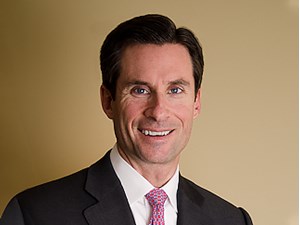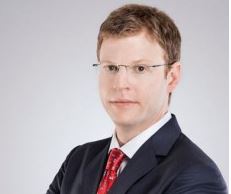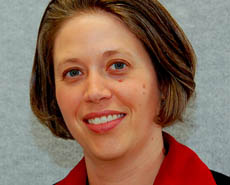Should we be snapping up land in the metaverse? Splashing out on virtual real estate? Should we jump onto the next big thing for fear of missing out? Or should the real estate sector be more skeptical about technology? These were some of the questions Yardi’s Bernie Devine and JLL’s Jordan Kostelac explored in the latest instalment of the Yardi Proptech Insights series. As JLL’s director for proptech in the Asia Pacific, Kostelac is focused on turning one of the world’s biggest real estate agencies into a technology company that specialises in real estate. Kostelac’s job is to “separate the wheat from the chaff” to uncover the technological solutions that will improve efficiencies, enhance human experiences and create new value. Technology’s main goal is disintermediation or, as Kostelac says, “to get rid of the middleman.” But JLL has a 250-year history as an intermediary that strikes deals and supports operations, Devine noted. “To survive, agencies need to move to a substantially a tech-driven platform where the human touch that agencies bring is amplified, and delivered even better, even smoother and even faster.” But does that mean JLL will be building software to sell? Creating the software to support better internal processes? Or something else entirely? “All of the above – but none of them yet,” was Kostelac’s response. JLL is investing in core technologies to improve workflows and deliver efficiencies across the business. There is no replacing a good broker, the pair agreed, but technology does allow brokers to automate tedious parts of their job so they can focus on relationship building. JLL is “fighting over the trophy fish” of premium and A-grade leases. But these only represent a fraction of the market and in the hybrid world of work, “A-grade real estate isn’t the only real estate that will matter,” Kostelac said. Flexibility will drive demand for lower grade stock so businesses can distribute their networks and create authentic experiences. “It’s more than CBD concentration in the future.” A bigger market requires better access to data, Devine observed. The conversation turned to the metaverse and the challenge of separating overstatements and obfuscation from real estate reality. “The idea that buying virtual real estate now is like buying real estate in Manhattan 250 years ago is just crazy,” Kostelac laughed. But “FOMO – the fear of missing out – eats due diligence for breakfast.” The ’fake it until you make it’ mindset is embedded in Silicon Valley culture and “there has to be some science fiction otherwise there’s stagnation,” Kostelac added. But now the metaverse is emerging as the ‘next big thing,’ Devine noted. “Blockchain and smart contracts and virtual real estate… I’m still a bricks and mortar guy, because you can’t copy and paste Times Square ..The price of real estate is driven by scarcity. But virtual real estate has unlimited supply.” Kostelac pointed to Hong Kong and Sydney – where he and Devine were located – as two illustrations of why physical real estate has value. These cities boast two of the deepest harbours in the world. We can’t “program” 39 billion years of evolution into a metaverse. But in the metaverse, “assumed scarcity can simply be overwritten by a single line of code.” “We are looking at threats where they aren’t there. And opportunities where they aren’t as well,” Kostelac noted. But the stakes aren’t just economic – we have the looming existential threat of climate change as a reality check. What is the solution for a sector susceptible to chasing hype, Devine asked? “It’s very simple. Show me the evidence,” Kostelac concluded. Watch the latest instalment of Yardi’s Proptech Insights and register for our next session, with Proptech Association Australia’s founder Kylie Davis,...
Industrial Markets
Trends Insight from Yardi client
Boosted by healthy economic fundamentals, the U.S. industrial real estate market maintained its historic growth throughout the first half of the year, according to the most recent Yardi Matrix industrial report. The sector continues to benefit from increases in online consumer spending. Traditional core industrial markets such as Chicago, New Jersey, Dallas-Fort Worth and the Inland Empire are still leading growth, but new areas of interest are emerging. Demand is stronger than ever, with more than 128 million square feet of space absorbed nationally in the first half of 2018. Yardi client Winstanley Enterprises is one of the largest owners and operators of warehouse and distribution space on the East Coast, according to a National Real Estate Investor survey. Founder & Principal Adam Winstanley has roughly three decades of experience in real estate acquisition, development, finance, construction, leasing, asset management and disposition. Winstanley shares insights into the East Coast’s industrial markets and touches on technology’s impact on the sector. He also talks about what causes distress among investors and reveals his plans for the next years. Which are the hottest industrial markets on the East Coast? Winstanley: The hottest industrial markets on the East Coast remain Exit 8A in New Jersey, Lehigh Valley in Pennsylvania and the current newcomer Connecticut—between Hartford and Springfield, Mass., on Interstate 91. What do you take into account when deciding your next investment location? Winstanley: We look for sites that have low site development costs, with quick access back to major interstates on primary distribution routes. This interview originally appeared in Commercial Property Executive, a Yardi publication. Read the rest of the conversation with Winstanley...
Michael Pestronk
Post Brothers Apartments
Over the last eight years, Michael and Matthew Pestronk, CEO and President of Post Brothers Apartments, have created a unique brand of Class A apartments for the Philadelphia market. Their latest major project is no exception. Presidential City, a John McShain project built in the early 1950’s that Post Brothers acquired in 2012 for $51 million, needed a fresh start. Updates had never been made to the 1,038 apartment interiors, and as Michael Pestronk says, “it just had not had any love in a really long time.” Kitchens were three decades old, bathrooms dated a half-century back. The first of four apartment towers was delivered this fall and is completely occupied. The $210 million redevelopment project is a complete renovation and reimagining of Presidential City. Each tower will have a unique theme and character, and the former Pool Club is undergoing a transformation to a world class spa and health club. “We’re making something that’s truly world class,” Pestronk says. Read on for more insight on Presidential City. This is a huge project. Can you put the size and scale in context? Pestronk: This is the largest residential development in the city of Philadelphia. Not just in the city proper, but also in the surrounding region. It’s located at the intersection of two of the heaviest trafficked highways in the region. It’s also very physically prominent. John McShain was from Philadelphia and built most of the monuments in Washington, D.C. He originally had a master plan to do 48 towers with something like 20,000 Philadelphia apartments. He built the first four, and eventually sold off the rest of the land. What is the overview of the renovation plan? Pestronk: We are not just renovating, but completely redeveloping. The outside façade of the properties looks...
Michael Weiser
GFI Realty Services
New York City’s strong multifamily market is creating some unusual trends and unprecedented opportunities for sellers to capitalize on their investments, says Michael Weiser, president of GFI Realty Services, Inc. In a recent interview, Weiser talked about the impact of rising prices for apartment properties, and the spillover effect on what were previously less-coveted assets and neighborhoods. Two potential winners: rent-stabilized building owners and Bronx landholders. Weiser joined GFI Realty in 1996 and has been president since 2011. He has a strong industry track record handling mortgage originations, as well as property acquisitions and dispositions. Today, Weiser manages the day to day operations of GFI’s Investment Sales & Financing division. What’s your take on the current state of the NYC rental market? Weiser: Around South Slope, Ditmas Park, Windsor Terrace, even Crown Heights in South Brooklyn you’re starting to see two-bedroom rents jump so high that $2400 a month is a bargain. Landlords can get $2500 to $2700 a month, and that’s driving interest from investors. What trends are you seeing in the multifamily space right now? Weiser: We’re seeing more and more pockets of money that are willing to pay up for rent-stabilized housing. Everyone has been talking about this for a long time, and we’re now seeing individual transaction activity that supports that. Where is this taking place? Weiser: Parts of upper Manhattan, Brooklyn and Queens (though there’s little activity there). In the Bronx, though, we’re seeing a totally different type of activity. Why rent-stabilized housing? Hasn’t it typically been considered a challenge to recoup investment value? Weiser: When you’re a developer you pay $200/sf for land, and then you need to build. If you can buy a rent-stabilized building for under $300 a square foot, it seems like you are getting...
Carrie A. Traeger
Property Management Inc.
With dual expertise in Human Resources and Information Technology, Carrie A. Traeger of Property Management, Inc. (PMI), is well-equipped to make smart business analysis decisions. Pennsylvania-based PMI, specializing in commercial, residential, manufactured housing and homeowner association management, has 225 employees and is predominantly a third-party, fee-based management firm. PMI manages 5.4 million square feet of commercial office space, 80 homeowner’s associations (6000 units), 14 manufactured home communities (1400 units) and 45 residential communities (4000 units), all in Pennsylvania. The company has made a name for itself with professionalism and proven results for holders and investors, and has recently seen tremendous growth in its commercial sector. We recently had the opportunity to gain Traeger’s insight on trending topics in HR and IT, a combination she calls “a fun umbrella,” as well as best business practices. A member of PMI’s team since 1994, she is active in the Society for Human Resource Management and the Human Resource Professionals of Central Pennsylvania. Traeger holds a MBA and accounting degree from Pennsylvania State University. In her free time, she serves as director of the PMI Charitable Foundation, which provides funds to not-for-profit organizations from programs which seek to enhance human dignity for those who are economically, educationally, and emotionally challenged. Traeger is also a member of her Church Finance Committee and as a leader in the Awana Program (children’s program). Many thanks to Carrie Traeger for agreeing to answer these questions for us. TBS: How do you manage dual oversight of IT and HR? CAT: My daily focus is on PMI’s mission statement. Our mission statement is to “provide superior property management services which exceed the expectations of customers and clients by focusing on prompt service, reliability, dedication, teamwork, education, training and innovation.” Almost every one of the...





